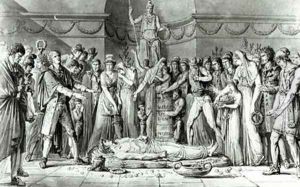E. Le Sueur Paintings
Eustache Le Sueur, born in 1617 in Paris, France, was a prominent French painter whose works are considered a pinnacle of French classicism. He was one of the founders of the French Academy of Painting and Sculpture. Le Sueur's artistry is often compared to that of his contemporaries, such as Nicolas Poussin, due to his adherence to classical ideals and his focus on harmony, clarity, and restrained emotion in his compositions. Despite his relatively short life, dying at the age of 38 in 1655, Le Sueur left behind a significant body of work that continues to be celebrated for its beauty and elegance.
Le Sueur's early life was marked by his apprenticeship under Simon Vouet, a leading French painter of the time, from whom he learned the importance of drawing and the study of classical sources. This foundational training is evident in the precision of Le Sueur’s figures and the coherence of his compositions. He quickly rose to prominence in Paris, gaining the patronage of important figures, which allowed him to work on a variety of commissions, both religious and secular.
One of Le Sueur's most notable works is the series of paintings for the Carthusian monastery in Paris, which includes the 'Life of St. Bruno'. These works are celebrated for their serene beauty and the delicate treatment of both figures and landscapes. His ability to convey profound spiritual and emotional depth without resorting to the theatricality common in the works of some of his contemporaries placed him at the forefront of the French classical movement.
Despite his success, Le Sueur led a relatively modest life and did not seek the kind of public office or courtly patronage that many of his peers pursued. His art was his main focus, and through it, he aimed to achieve a timeless ideal, drawing inspiration from ancient sources and the works of Raphael, whom he greatly admired. Le Sueur's influence on French painting was profound, setting a standard for elegance and purity of composition that would dominate the French Academy for years to come.
After his death in 1655, Le Sueur's reputation continued to grow, and his works were collected by connoisseurs and displayed in prominent places, including the Louvre. Today, he is remembered not only for his contributions to the French classical tradition but also for his role in the development of academic art in France. His legacy is that of a painter who, despite his early death, managed to embody the ideals of clarity, harmony, and moral dignity that are the hallmarks of French classicism.
